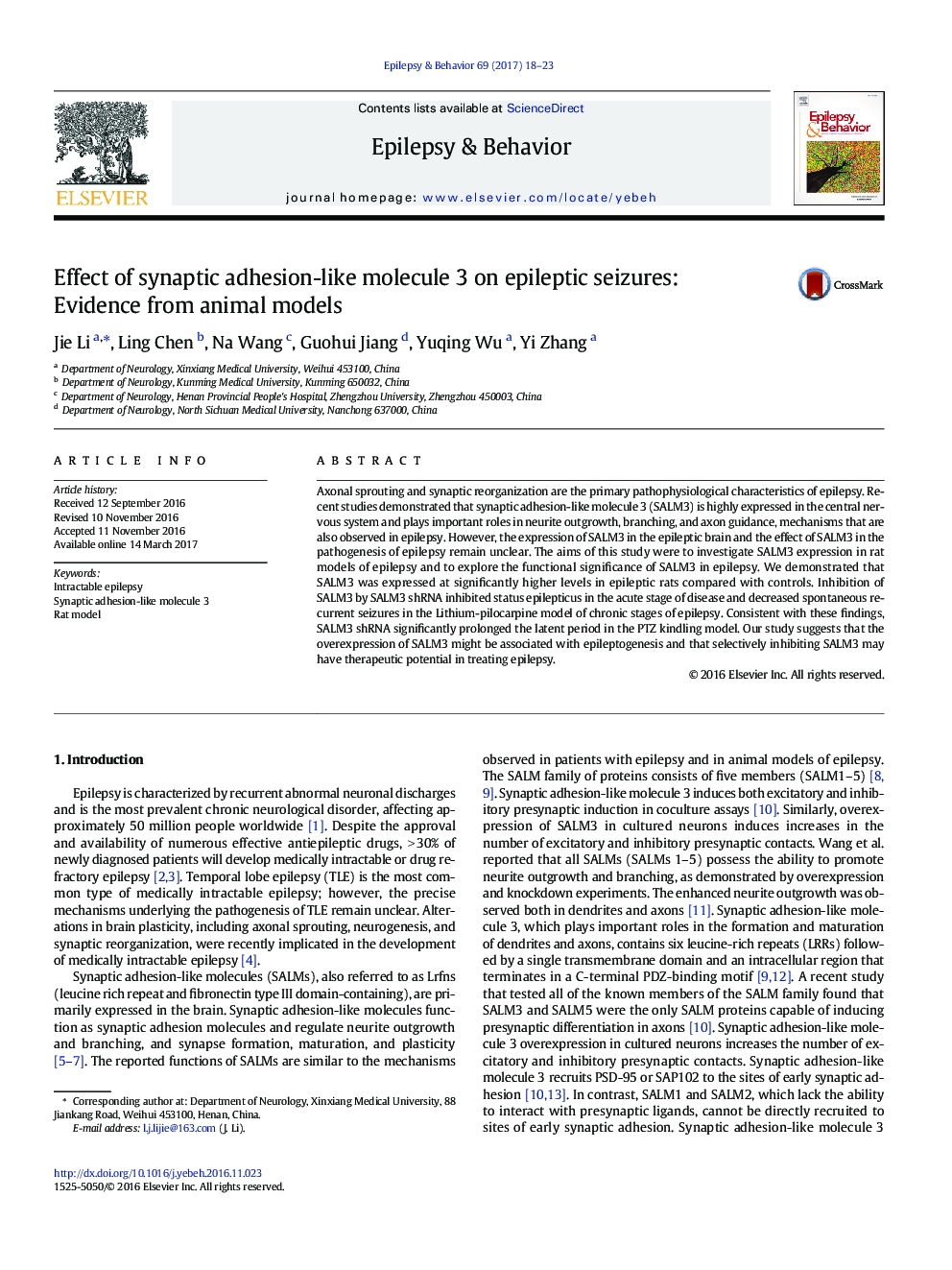| Article ID | Journal | Published Year | Pages | File Type |
|---|---|---|---|---|
| 5628418 | Epilepsy & Behavior | 2017 | 6 Pages |
â¢The expression of SALM3 was significantly increased in the Li-Pilo epilepsy model.â¢SALM3 shRNA inhibits neuronal hyperexcitability in vitro.â¢Inhibition of SALM3 with shRNA attenuated seizure activity both in Li-Pilo and PTZ models.
Axonal sprouting and synaptic reorganization are the primary pathophysiological characteristics of epilepsy. Recent studies demonstrated that synaptic adhesion-like molecule 3 (SALM3) is highly expressed in the central nervous system and plays important roles in neurite outgrowth, branching, and axon guidance, mechanisms that are also observed in epilepsy. However, the expression of SALM3 in the epileptic brain and the effect of SALM3 in the pathogenesis of epilepsy remain unclear. The aims of this study were to investigate SALM3 expression in rat models of epilepsy and to explore the functional significance of SALM3 in epilepsy. We demonstrated that SALM3 was expressed at significantly higher levels in epileptic rats compared with controls. Inhibition of SALM3 by SALM3 shRNA inhibited status epilepticus in the acute stage of disease and decreased spontaneous recurrent seizures in the Lithium-pilocarpine model of chronic stages of epilepsy. Consistent with these findings, SALM3 shRNA significantly prolonged the latent period in the PTZ kindling model. Our study suggests that the overexpression of SALM3 might be associated with epileptogenesis and that selectively inhibiting SALM3 may have therapeutic potential in treating epilepsy.
